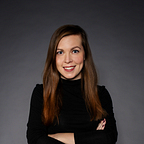Designing employee-centred workplace experience
Ideas and design process behind an application improving workplace while fostering a community.
In today’s world, people spend on average 40.7 hours a week at work. This is a significant part of a week and of our time. Sometimes, it extends beyond this amount of hours. The working day is all about our daily agenda concerning work duties and private matters alike: going for lunch, securing a place for a meeting with a client, transporting yourself to a meeting with a client, taking clothes to the laundry service — all the activities take up considerable time.
Challenge
We were approached by client to find a solution and enhance their current application. The primary aim of the app is to create a more efficient environment, give access to all exclusive services available in a certain project. We looked for a solution that would achieve these objectives:
- improvement of functionality and usability,
- showcasing efficiently available services so that the user fully understands what and how he can use,
- creating a workplace experience that will make the user´s life simpler and more pleasurable.
Process
We did not want to devise an application based on its previous version or merely based on our client’s requirements. We recognized an opportunity to design a product that the target users will want to use. Therefore, the end user was at the centre of our interest, and we aimed to connect with as many people using the client´s properties as possible. We had to, essentially, dive into their daily routine. Thus:
- several workshops with stakeholders were organized
- in-depth interviews were conducted
- these tools also helped us to understand the client’s business challenge
Collectively, we identified risks, set expectations and developed a common vision of the application. Following this approach, we created the experience strategy for each phase and the direction of the design process as a whole.
Approach
Throughout the research, we discovered that every user embraces a significantly different daily agenda. It reflects their position, lifestyle and preferences. Based on the interviews, we constructed several archetypes representing a different degree of user engagement within the application and behavioral patterns. These personas helped us to better our decisions, prioritize, and exercise empathy mapping to create empathy among the team, end users, and the client.
User journeys were employed to visualize and communicate the users´ daily rhythm. This enabled us to put into context individual pain points, emotions and to identify opportunities we can focus on.
We designed modularly for future expansion
Based on gained data, we effectively set basic application flow and discussed the proposed architecture with software engineers. Simultaneously, we started defining framework for the entire app with an emphasis on modularity and scalability and to develop first wireframes.
Thanks to modularity, we were able to quickly scale individual interfaces and ensure the necessary content for all types of users. Our ultimate product design goals was a symbiosis of the following key points:
- app design with an efficient overview of all modules, implemented reminders, confirmation and follow up notifications and valuable content for the user
- a quick and effective system that enables users to book a meeting room, order a meal, rent a bike, check scheduled events or organize them
- design a personalized app that reflects user’s interactions and engagement, deliver a smooth experience with minimum efforts to find suitable services
- full self-service bike-sharing module with a real-time overview of the bike's availability
The icing on the cake: gamified employee-engagement with an Attitude
Besides the “efficiency, effectiveness and satisfaction” perspective, the user engagement played a crucial role. The gamification element and a humorous character are distinctly embedded into services. For instance, the bike sharing module contains a leaderboard or included reward system. Users gain rewards in form of points and other incentives encouraging them to come back and continually use the application.
Conclusion
We proposed a design solution that intersects in users’ desirability, tech feasibility, and business viability. On one side, the interface serves as a productivity app, on the other, internal side, it functions as a powerful tool for evaluating module processes and collection and visualization of data.
However, due to time insufficiency, our design team was forced to shorten some of the design process steps, e.g. user research, user testing as well as gathering more feedback from user interviews than we did. Therefore the overall solution is designed to be rather loose than exactly tightened to all stakeholder’s needs. But this at least gave us the advantage of fast iteration in the future.
